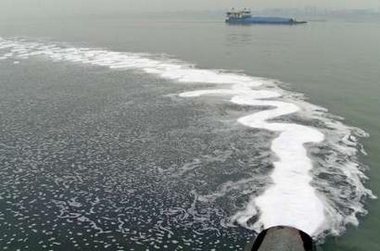Report: Yangtze water worsening
(Xinhua)Updated: 2007-04-15 16:07 CHANGSHA, The first annual health report on the Yangtze River indicates that the billions of tons of waste that continue to be dumped into China's longest waterway are taking a serious toll its aquatic life.
The 2007 annual report on Yangtze River protection and development shows that more than 600 kilometers of the river are in critical condition. The report says almost 30 percent of its major tributaries, including the Minjiang, Tuojiang, Xiangjiang and Huangpu rivers, are seriously polluted.
The report says the river's annual harvest of aquatic products dropped from 427,000 tons in the 1950s to about 100,000 tons in the 1990s.
A separate study by the Yangtze River Water Resources Commission shows cities along the river discharge at least 14.2 billion tons of polluted water every year, 42 percent of China's total.
Pollution, damming and too many boats have caused a dramatic decline in Yangtze aquatic life. While rare species such as the white-flag dolphin are thought to be on the verge of extinction, even common species such as carp are gasping for survival, the report said.
"The impact of human activities on the Yangtze water ecology is largely irreversible," said Yang Guishan, a researcher of the Nanjing Institute of Geography and Limnology under the Chinese Academy of Sciences and one of the chief editors of the report. "It's a pressing job to regulate such activities in all the Yangtze drainage areas and promote harmonious development of man and nature."
The report, complied by Yang's institute, the Yangtze River Water Resources Commission and the WWF, also warned of the higher flood risks.
The Yangtze accounts for about 35 percent of China's total fresh water resources but it's also responsible for 70 to 75 percent of the country's floods, the report said.
"Flood control remains an arduous task along the Yangtze, given the rising temperature and frequent occurrences of extreme weather over the last 50 years," said Yang.
Although the Three Gorges Dam, the world's largest water storage facility, has reduced flood risks in the middle reaches, the risk of flooding remains high in the lower reaches, he said.
The report also assessed the Three Gorges Dam project, showing its huge reservoir is seriously polluted by pesticides, fertilizers and sewage from passenger boats.
China allocated 4 billion yuan (US$513 million) in 2002 to offset the impact of the dam on the ecology, the local environment and the local people, said Prof. Weng Lida, former head of the Yangtze River Water Resources Commission, adding that more cash is coming.
"We have to take into consideration the proper settlement of the people who have been displaced, environmental protection, heavy silting and the prevention of geological disasters," said Weng who cautioned that "faster is not always better."
The water level in the Three Gorges reservoir reached a landmark 156 meters last October, but some provinces want the level to go higher so more electricity can be produced, Weng said.
"Higher water levels will worsen pollution and silting. We have to seek more sustained development," he said.
|
||
|
||
|
|

